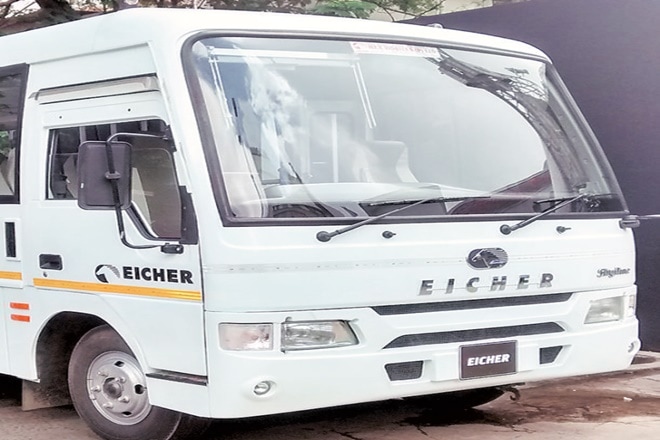Nine months after the country’s transition to the Bharat State IV (BS IV) emission norms for vehicles, one segment is still to come to terms with the shift. It is the passenger carrier commercial vehicle (or bus) segment. Vinod Aggarwal, managing director & CEO, Volvo Eicher Commercial Vehicles (VECV), which has about 30% market share in the light and medium duty CV segment in India, said bus sales for the company are down 20% this year compared to the same period last year. Aggarwal said, “This is because a lot of pre-buying that happened due to the BS III ban from April this year. School bus sales picked up in the first quarter, however due to pre-buying, school bus sales have been weak. Not many orders have come from state transport corporations either.” According to data released by the Society of Indian Automobile Manufacturers (Siam), wholesale dispatches of passenger carriers in the medium and heavy commercial vehicle segment, which generally refer to large buses, have dropped by a sharp 28% to 21,528 units in the April-November period of this fiscal compared to the same period last year.
Passenger carriers in the LCV segment, which generally refer to vans, have declined by 12% to 28,997 units. Besides mopeds, these are the only segments in the automobiles sector that have seen a decline in growth this fiscal. Most of the demand for school buses comes around the start of a new academic year, between April and June. However, since the emission norms were to be implemented starting April 1, there was bunched-up pre-buying in March to avoid paying higher prices for more expensive BS IV-compliant models. According to Binaifer Jehani, director, CRISIL Research, prices of buses rose by 8-10% on an average after the change in emission norms. “There was pre-buying seen due to the expected rise in bus prices. We have also noticed fresh demand arising, but buyers are postponing any purchases. This is why things are going slow.”
This phenomena has also resulted in a demand slump from the inter-city transport segment, state transport undertakings (STUs)and the staff segment. According to Binaifer, not many new routes have been added in the inter-city segment, leading to decline in sales. While the goods carrier segment of heavy commercial vehicles, which witnessed a 33% decline in sales in the first quarter of the fiscal due to BS III ban, has seen a pick-up in the second quarter, the passenger carrier segment continues to remain weak. In the second quarter, sales of goods carriers in the M&HCV segment rose by 30%, while sales of passenger carriers in the M&HCV segment declined by 26%. Analysts expect that the passenger carrier segment to continue its negative growth trend till the end of the fiscal. Binaifer said, “Till the end of this year, there is going to be a slump in bus sales. This year, bus sales are likely to decline by 19%. Growth may come only in the next fiscal. We forecast a 15% growth in this segment next fiscal.”
Demand from STUs is also expected to bounce back in the next fiscal.

